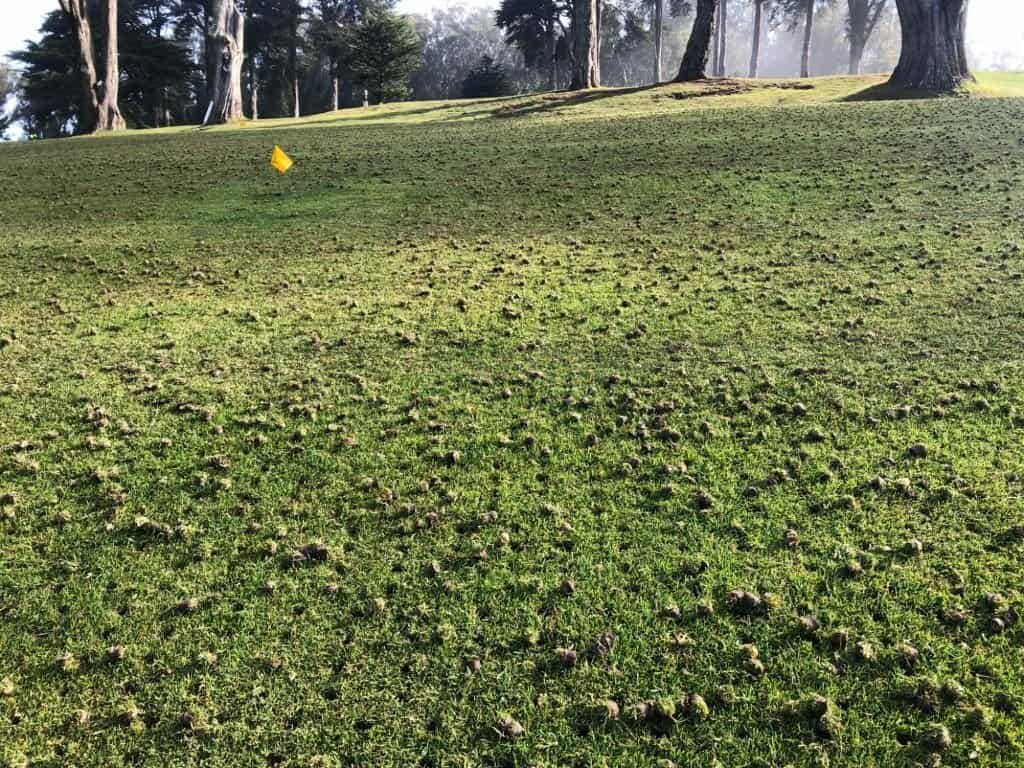Every homeowner dreams of having a lush, vibrant lawn that serves as the perfect backdrop for outdoor activities and enhances curb appeal. But achieving and maintaining that kind of lawn requires more than just routine mowing and watering. Two often overlooked yet crucial steps in lawn care are aeration and overseeding.
These techniques are the secret weapons that help restore your lawn’s health, boost growth, and ensure it stays green and thick all year long. Let’s dive into why these practices are essential and how they completely transform your lawn into the green paradise you’ve always wanted.
What is Aeration?
Aeration is one of the most effective ways to breathe life back into your lawn. It addresses soil compaction and allows your grass to thrive. Over time, foot traffic, heavy rainfall, and even lawn equipment can lead to soil compaction, restricting the movement of air, water, and nutrients to the grass. This can cause your lawn to struggle, making it appear thin, unhealthy, and patchy.
The Process of Aeration
Aeration involves creating small holes in the soil, typically with an aeration machine, that allow air, water, and essential nutrients to penetrate the roots more easily. This access encourages deeper root growth, resulting in a stronger and more resilient lawn.
Aeration also reduces the buildup of thatch, a thick layer of organic matter between the grass and the soil. While a small amount of thatch can be beneficial, too much can suffocate your lawn, blocking air and moisture from reaching the soil. By breaking up thatch and loosening compacted soil, aeration ensures your lawn is in the best possible condition to absorb everything it needs to thrive.
Tip: The best time for aeration is typically in the fall when the lawn is actively growing but not under the stress of the summer heat. Aerating during this time allows your lawn to recover quickly and makes it more receptive to overseeding.

What is Overseeding?
Overseeding is the process of adding new grass seed to an existing lawn to promote denser growth and improve the lawn’s overall appearance. It is one of the best ways to keep your grass looking vibrant and full, particularly if you’ve noticed thinning spots or areas that don’t seem to grow as well as others. Grass can wear down over time due to age, disease, pests, and foot traffic, but overseeding introduces new life into your lawn, making it look fresh and lush once again.
The Overseeding Process
Overseeding fills in bare or thinning areas, helping prevent weeds from taking root. It also introduces a mix of grass varieties that can make your lawn more resistant to disease, drought, and extreme temperatures. A diverse lawn with multiple types of grass tends to be healthier and more adaptable to changing environmental conditions.
When paired with aeration, overseeding becomes even more effective. Aeration loosens the soil and creates the ideal environment for grass seeds to make contact with it and germinate. As the seeds settle into the aeration holes, they have better access to moisture and nutrients, which significantly improves their chances of successful growth.
This combination results in a thicker, greener lawn that looks fantastic and is better equipped to handle stress, resist pests, and outcompete weeds. Fall is the ideal time for overseeding as the cooler weather and increased moisture create the perfect conditions for seed germination and root establishment.

Why Does Aeration and Overseeding Always Come Together?
While both aeration and overseeding are powerful on their own, they provide the ultimate solution for revitalizing your lawn when used together. Aeration prepares your lawn to receive the maximum benefits from overseeding by creating an optimal environment for seed germination and growth.
The holes made during the aeration process allow the seeds to settle deeper into the soil, improving their contact with moisture and nutrients. This not only accelerates the germination process but also promotes stronger, deeper root systems, which are critical for a healthy, resilient lawn.
Together, aeration and overseeding restore your lawn’s vitality after a hot summer or repair damage caused by heavy foot traffic, pets, or other stressors. Plus, the newly introduced grass varieties from overseeding help diversify your lawn, making it more adaptable to environmental changes. A previously aerated lawn encourages new seedlings to establish more quickly, giving your yard a uniform, healthy appearance faster than overseeding alone.
Why Autumn?
By scheduling aeration and overseeding in the fall, you’re taking advantage of the season’s mild temperatures and natural moisture. Fall is the ideal time because it gives the grass enough time to establish strong roots before winter dormancy sets in, ensuring a beautiful lawn come spring. With these two practices working harmoniously, your lawn will have the foundation it needs to grow thicker, greener, and healthier grass.

Conclusion
Aeration and overseeding are two of the most beneficial lawn care practices you can invest in for a vibrant, healthy lawn. By breaking up compacted soil and introducing new grass seeds, these techniques work together to repair damage, improve growth, and prepare your lawn to withstand the challenges of the changing seasons.Whether you’re dealing with bare patches, thinning grass, or soil compaction, aeration and overseeding offer an effective and proven way to revitalize your lawn. Don’t wait until your lawn looks tired and worn–fall is the perfect time to take action.
Call NowSERVICE AREAS

Contact Us Now!
"*" indicates required fields
 info@rishlawncare.com
info@rishlawncare.com
